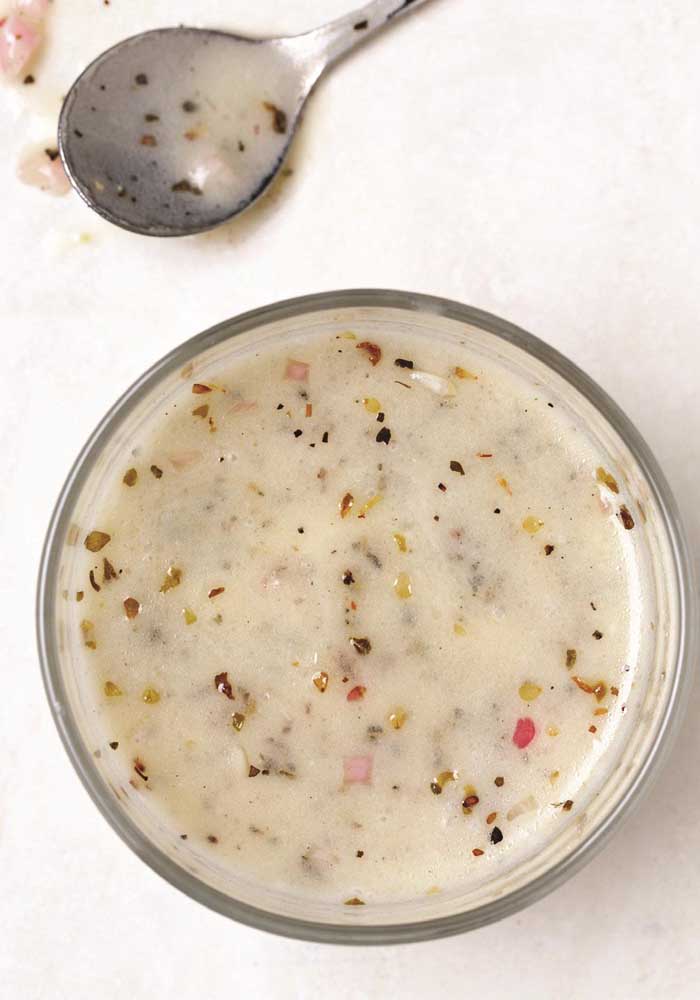Rich & Refined
Published 2:15 am Friday, January 18, 2019

- SUNFLOWER OIL has become a go-to for a few things, but especially for vinaigrettes.
As a recipe writer, I’ve asked you countless times to reach for canola “or another neutral oil.” But what if vegetable oil isn’t supposed to be flavorless after all? Most “neutral oil” got that way because it has been chemically refined, deodorized and otherwise processed in the name of granting it near-infinite shelf life.
“Big ag has decided oil should be flavorless, but that runs counter to the larger food movement,” says Joshua Leidhecker, owner of Susquehanna Mills, in Pennsdale, Pennsylvania, where he makes a very different type of vegetable oil. Something that’s anything but neutral.
Trending
It was Leidhecker’s unusual sunflower oil that first got me thinking about all this a few months ago. I was eating dinner at Cadence restaurant in Philadelphia, where my bread arrived beside a ramekin of what I figured was olive oil. My server informed me it was local, expeller-pressed sunflower oil. I may actually have rolled my eyes, wondering why some chefs just have to be so cute.
Then I dipped a torn hunk of bread into it, and repeated until the bread was gone. I considered tipping the remaining dram of oil directly into my mouth.
This was nothing like any sunflower oil I had tasted before, which had been limited to the ones you find at the supermarket, labels boasting of their “neutral” flavor. This was nutty and buttery, with a shadow of earthy bitterness. Its richness was the perfect complement to the toasty, whole-grain character of the bread.
Leidhecker describes his oil as “lightly refined” because it is filtered to remove a naturally occurring waxy substance. But beyond that, it’s made in much the same way as extra-virgin olive oil. The oil is coaxed from local sunflower seeds, harvested on the property or nearby, with an old-fashioned expeller press. Only physical pressure, no heat or chemicals, is used to extract the oil.
A few other businesses in the United States have taken this approach and offer sunflower oil on par with Leidhecker’s. New York state is home to two such operations. Stony Brook WholeHeartedFoods makes its oils in the Finger Lakes region, and you can find them at a variety of natural food markets and food co-ops, mostly on the East Coast. Hudson Valley Cold Pressed Oils sells its sunflower oil at farmers markets and local retailers. Pressed in Central Michigan, Small House oils are also sold mainly near where they’re made.
All of these oils, including the one made at Susquehanna Mills in Pennsylvania, ship nationwide. If you don’t live in those areas, order any of them at the company’s website. You can also find full-flavored, coldpressed sunflower oils imported from Eastern Europe online, but for me, that removes the warm fuzzies of supporting American farmers, especially if you live close to a domestic producer.
Trending
Soon after getting my first taste of nonindustrial sunflower oil at Cadence, I bought my own bottle through my CSA. At $10 for 25 ounces, it’s less than half the price of the imported olive oil I normally use when I want a flavorful fat. Not only would I save money if I could replace the Italian stuff, but I could also feel better about cutting the food miles represented by my pantry.
That’s why Spike Gjerde, chef at Woodberry Kitchen in Baltimore, dumped olive oil in favor of Susquehanna Mills oils several years ago. His top priorities are sustainability and supporting the local food economy. And if it’s good enough for Gjerde, a James Beard award-winning chef, surely it’s good enough for me.
“The sunflower oil has become our go-to for a few things, but especially for vinaigrettes,” Gjerde says. (His kitchen also uses Susquehanna Mills canola oil.) “It has a distinct flavor, but it doesn’t overwhelm other ingredients.” The oil’s buttery overtones make it a favorite of pastry chefs and bakers. The nutty notes accent the flavors of the whole grains in a bran muffin, for example. And unlike some other minimally refined oils, it doesn’t pick up off notes in the oven’s high heat.
POTATO AND CELERY ROOT SOUP
If you can’t find a local, minimally refined sunflower oil, which gives this soup a rich, buttery flavor without dairy, you could use butter or olive oil. In testing, we found that using a lighter-colored broth works best for this recipe. Fry some small cubes of fresh bread for croutons and serve it with a green salad to make this soup a meal.
INGREDIENTS:
1/4 cup lightly refined, expeller-pressed sunflower olive oil, plus more for serving
2 medium onions, chopped (about 2 cups)
1 rib celery, chopped 2 cloves garlic, chopped
1 pound Yukon Gold potatoes, peeled and chopped
1 medium celery root (celeriac), peeled and chopped (about 3 cups)
8 cups low-sodium chicken or vegetable broth (see Overview) Kosher salt
Freshly ground black pepper
2 tablespoons chopped chives, for garnish
DIRECTIONS
• Heat the oil in a large pot over medium heat. Once the oil shimmers, stir in the onions and celery; cook for about 8 minutes, until softened but not browned. Add the garlic and cook for 1 minute, until fragrant.
• Add the potatoes, celery root and broth. Increase the heat to high and bring to a boil, then reduce to medium-low, partially cove rand cook for about 45 minutes, until the celery root is very tender when you test it with a fork. Turn off the heat.
• Remove the center knob of your blender lid and place a paper towel loosely over the opening to avoid splash-ups. Working in batches, puree the soup in the blender until smooth. Taste, and season lightly with salt and pepper.
• Serve each portion hot, drizzled generously with more oil, then garnish with chives. Servings: 6 (makes 11 cups).
From food writer and cookbook author Joy Manning.
SUNFLOWER SEED PESTO PASTA
INGREDIENTS:
Kosher salt
12 ounces dried whole-wheat fusilli
1/4 cup hulled, raw sunflower seeds
1 ounce Parmigiano-Reggiano cheese, cut into chunks
1 clove garlic
1 1/2 cups packed arugula leaves
1/4 cup unrefined, expeller-pressed sunflower oil
2 teaspoons white balsamic vinegar
DIRECTIONS
• Bring a pot of generously salted water to a boil over mediumhigh heat. Add the pasta and cook according to the package directions. Drain and return to the pot, reserving about 1/2 cup of pasta cooking water.
• Meanwhile, combine the sunflower seeds, cheese and garlic in a food processor. Pulse until finely ground. Add the arugula and pulse to break down the greens. With the motor running, slowly stream in the oil.
• Add the white balsamic vinegar, then process for about 10 more seconds, to form a fairly smooth pesto. Taste, and season lightly with salt, as needed.
• Toss the hot pasta with the pesto, adding the reserved pasta cooking water 1 tablespoon at a time until you reach the desired consistency of sauce.
• Serve right away. Servings: 4.
From food writer and cookbook author Joy Manning.
SUNFLOWER OIL VINAIGRETTE
This dressing is more complex with the fragrant, earthy sunflower oil as its base, but you could substitute another flavorful oil, such as extra-virgin olive or walnut oil, with great results. Dried herbs work well in a dressing you plan to keep around a few days. If you prefer fresh herbs, use at least 1 tablespoon of any soft herb. MAKE AHEAD: The vinaigrette can be refrigerated in an airtight container for up to 1 week.
INGREDIENTS:
1⁄3 cup unrefined, expeller-pressed sunflower oil
1 tablespoon white balsamic vinegar
1 tablespoon white wine vinegar
1 tablespoon minced shallot
2 teaspoons sour cream
1⁄4 teaspoon dried basil
1⁄4 teaspoon dried oregano
1⁄4 teaspoon salt
Freshly ground black pepper
DIRECTIONS
• Combine the oil, both vinegars, shallot, sour cream, dried basil and oregano, salt and a pinch of the pepper in a jar with a tight-fitting lid.
• Seal and shake vigorously to form an emulsified vinaigrette. (Alternatively, whisk in a mixing bowl or puree in a food processor.)
• Taste, and add more salt and/or pepper, as needed. Servings: 4 (makes about 1/2 cup).
From food writer and cookbook author Joy Manning.






